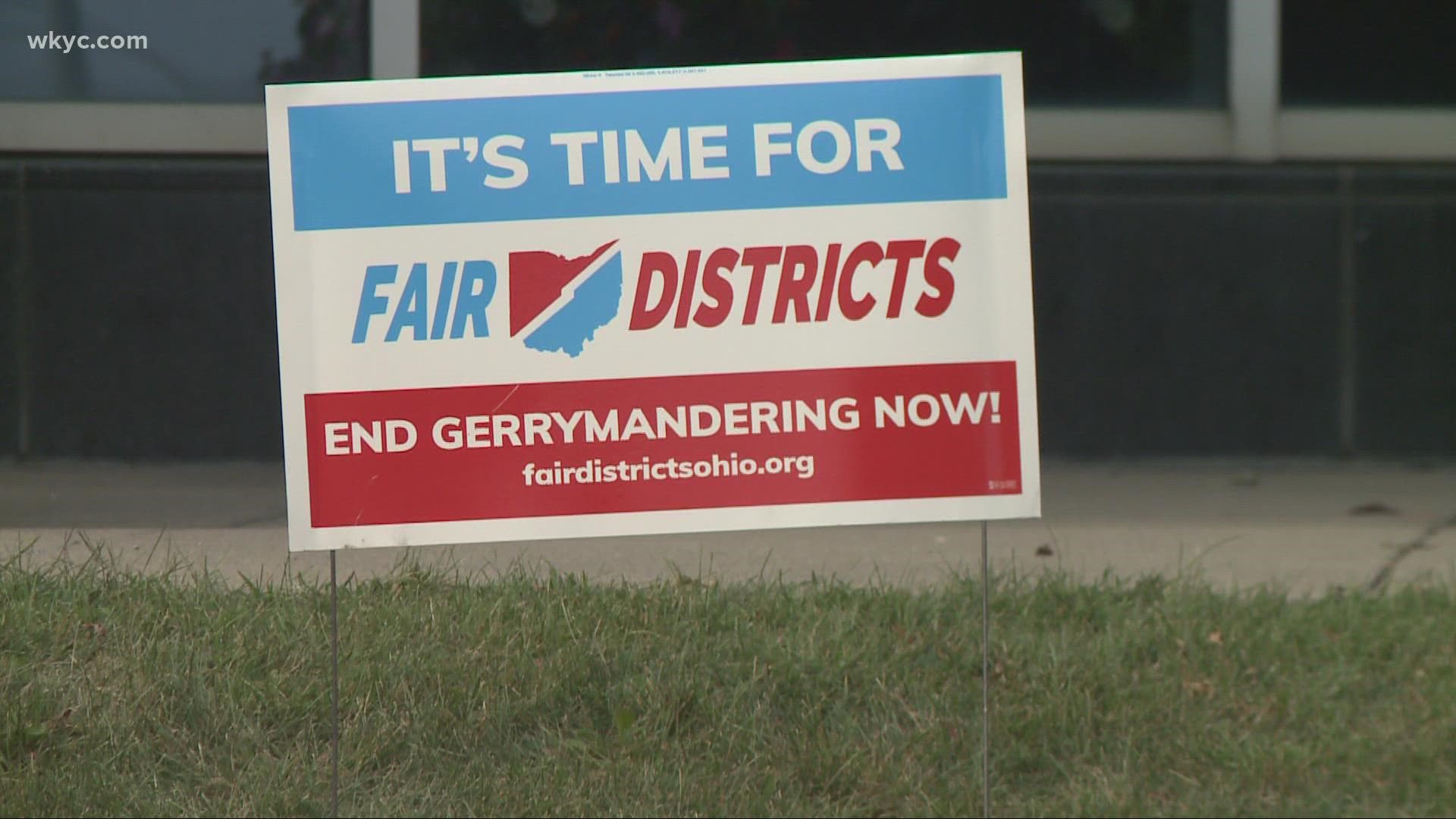WARRENSVILLE HEIGHTS, Ohio — Ohio's road to redistricting passed through Northeast Ohio on Monday evening, as the Ohio Redistricting Commission held its second of three public hearings on new state legislative maps, following the 2020 U.S. Census.
The hearing was held at Corporate College at Tri-C's East campus in Warrensville Heights, two days before the deadline to approve the final maps on Wednesday.
The seven-member commission is comprised of two Democrats and five majority Republicans, including Governor Mike DeWine.
"It certainly is the goal to have something that the people of Ohio can have trust in, and feel good about," said DeWine, about the possibility of reaching a bipartisan compromise.
But that appears to be a tough task. Supporters from Fair Districts Ohio, a non-partisan voting rights group, posted signs outside the building, and held posters during the hearing urging commission members to "do your job."
"The Republican super-majority is not representing all of us, and it's scary," said Virginia Weiss.
Democrats on the Ohio Redistricting Commission presented a counterproposal to the Republican plan, that would still retain the GOP's majority, but not a veto-proof super-majority.
Under the Democrats' proposal from House Minority leader Emilia Sykes, D-Akron, and Sen. Vernon Sykes, D-Akron, the GOP would likely win 57 of 99 Ohio House seats, and 20 of 33 Ohio Senate seats.
Under the Republican plan for the Ohio House and Ohio Senate, the GOP would likely win 66-percent of seats in the General Assembly, thus sealing a veto-proof majority.
"This redistricting process is a slap in the face to the over 70-percent of Ohioans who voted for the redistricting reforms," said one speaker at the public hearing.
In 2015, Ohio voters overwhelmingly voted for anti-gerrymandering rules, which include a requirements for bipartisan compromise, and to avoid drawing maps that unfairly benefit one party.
"The voters have spoken," said DeWine. "They gave us marching orders, or a list of things we have to do, and it shouldn't surprise anyone that sometimes doing all of that at the same time is difficult," he said.
Republicans have incentive to reach a compromise with Democrats, in order for the maps to last for 10 years. Without Democrat votes, the maps would only last four years.
More Coverage:
- Ohio Commission accepts GOP redistricting map as ‘working document’
- Ohio Redistricting Commission adopts rules; Sept. 1 deadline passes without map proposal
- Ohio district maps split houses in two, making representation more difficult
- Census reveals Cleveland's population declines, but America and Ohio are becoming more diverse

